You may like it or not, but oftentimes we hear people crediting the Mughals or Britishers for the development of India’s art culture.
It’ll be inappropriate, unreasonable, and invalid to wholly credit the Mughals or Britishers for India’s rich and vast art history.
Of course, they introduced some painting techniques and styles to Indian art.
But ancient Indian art was far ahead of its time—something tremendously aesthetic and valuable that had remained an inspiration for North Asia and some Western countries.
However, during the medieval period, art in India went through several transitions due to the invaders.
There was a rise of Islam, which lasted until the 18th century, when Britishers began gaining momentum across India.
Throughout these events, India witnessed a dramatic change, especially in the way art was being created, promoted, and perceived.
India’s art, which looks diverse, vast, and intriguingly beautiful—something that seems fictional but isn’t—amazes the world of art with its creations.
Explaining every aspect of it would be overwhelming, so we decided to present the most important scenarios of diversified Indian art.
(Also Read: 24 Renaissance Facts)
Table of contents
Early Indian Art
Early Indian art wasn’t just art; it was a remnant of people from prehistoric times.
If you look at contemporary Indian art, you’ll see a strong sense of cultural and political acclamation.
But back in the day, art was made to convey and communicate with peers.
Thanks to archaeologists, who discovered several Indian carvings, drawings, and prints, which helped us learn about our ancient culture and traditions.
Although the origin of Indian art dates back to cave/ rock art, it is believed that the peak of the Indus Valley Civilization brought most of the Indian art forms into existence.
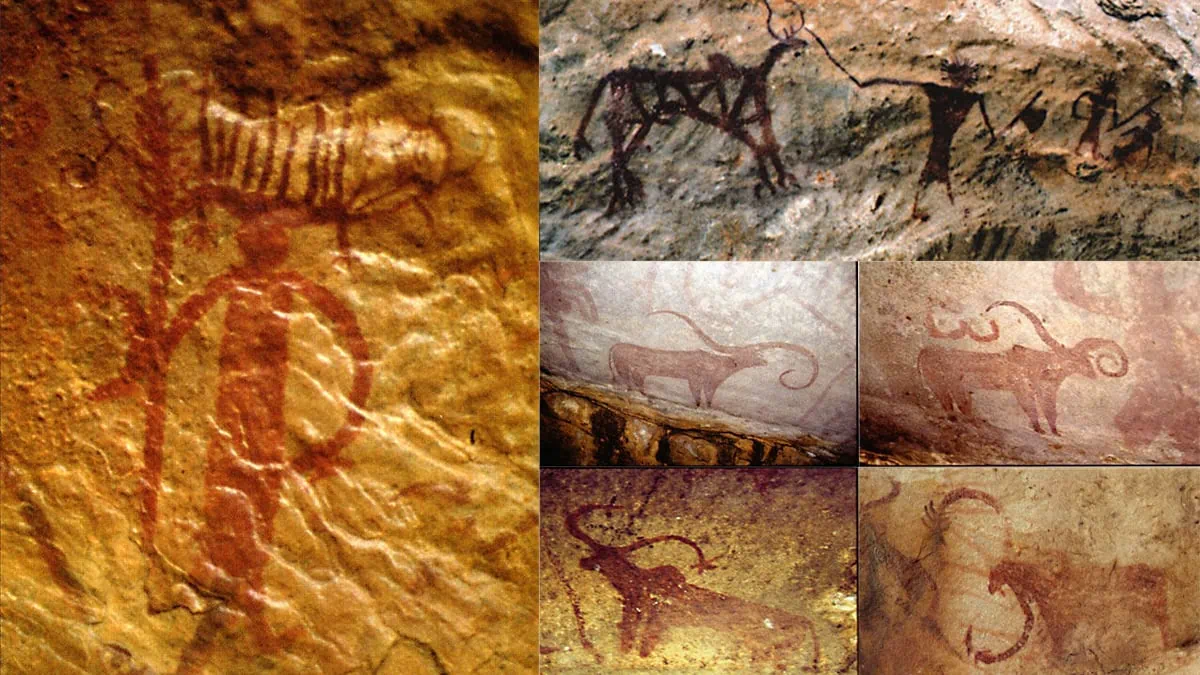
Let’s understand how long back Indian art is.
Suggested Read: Art Deco Artists
Rock Art
Have you ever heard of Bhimbetka Rock? If not, let me tell you that it was a place where the oldest cave paintings of India were found.
It could be around 10,000 years old and was discovered by an Indian archaeologist, Vishnu Shridhar Wakankar.
He thoroughly explained the existence of rock art in India and its types in his paper works. He distinguished rock art forms into three types: petroglyphs, pictographs, and earth figures.
What’s rock art?
Rock art is nothing but painting or bruising on caves; according to research, ancient people would rely on rock art to leave the marks of their faiths, religious icons, and symbols.
India has been home to rock art, which existed across the nation, mainly in Madhya Pradesh, Uttar Pradesh, Uttarakhand, Tamil Nadu, and others.
Needless to say, it’s vast, diverse, and varied both in thematic and stylistic content, which, in today’s time, is seen as evidence of ancient Indian civilization.
However, several cave paintings were destroyed or perished over time, perhaps because of invaders or natural conditions.
The ones discovered by Indians and other archaeologists remained a pride of India and concrete evidence of India’s ancient civilization.
(Suggested: History of Painting)
Indus Valley Civilization
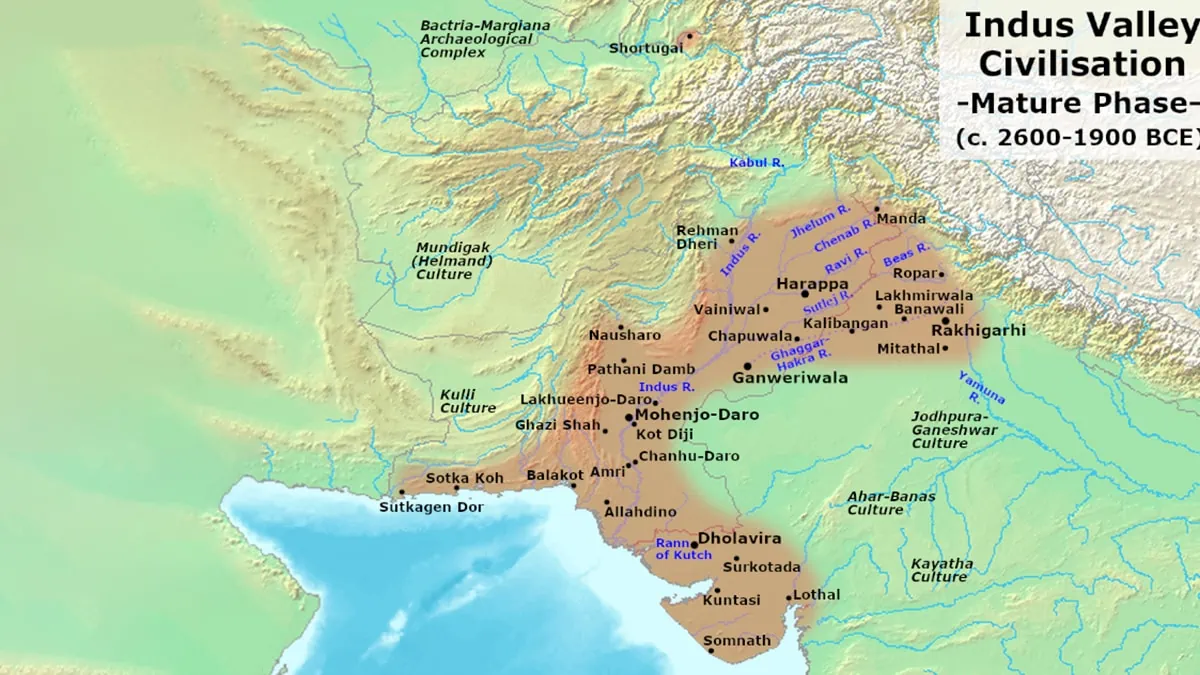
When we talk about the Indus Valley Civilization, two names come to mind: Harappa and Mohenjo Daro, which post-independence India, became parts of Pakistan.
They were the major cities in the Indus Valley Civilization, encompassing houses, markets, shelters, and every basic amenity one requires to lead a happy life.
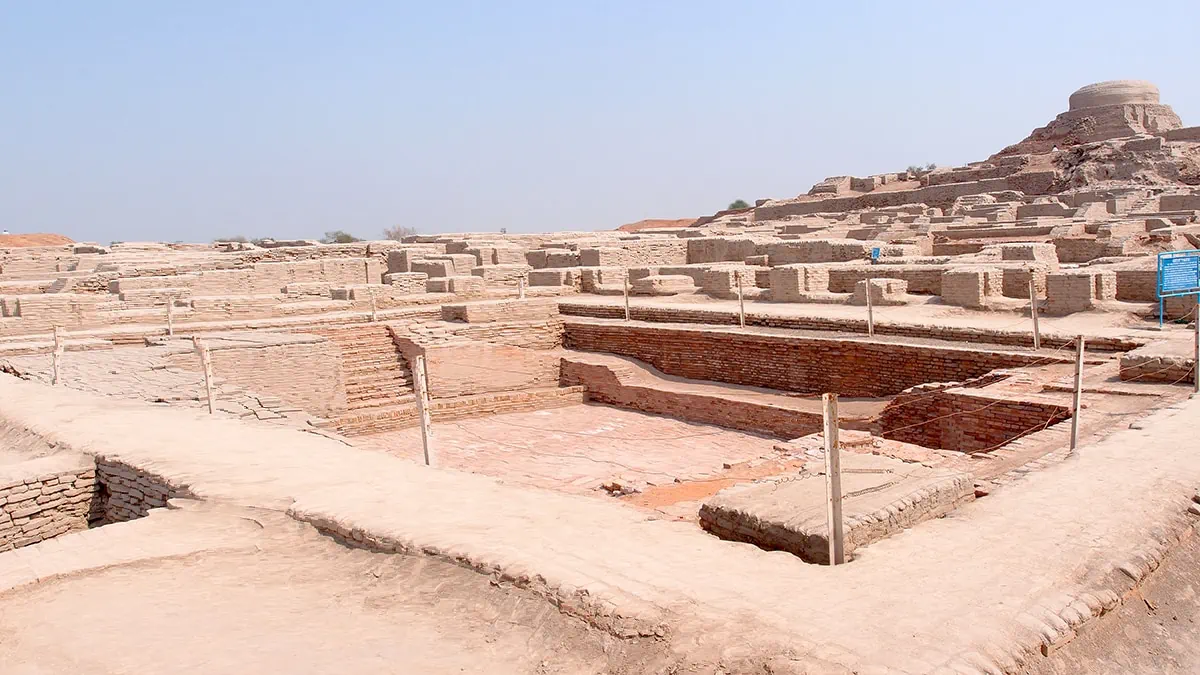
The shift between rock art and Indus Valley Civilization is evident and inherently massive because several art forms became prominent, including sculptures, seals, pottery, jewellery, terracotta figures, etc.
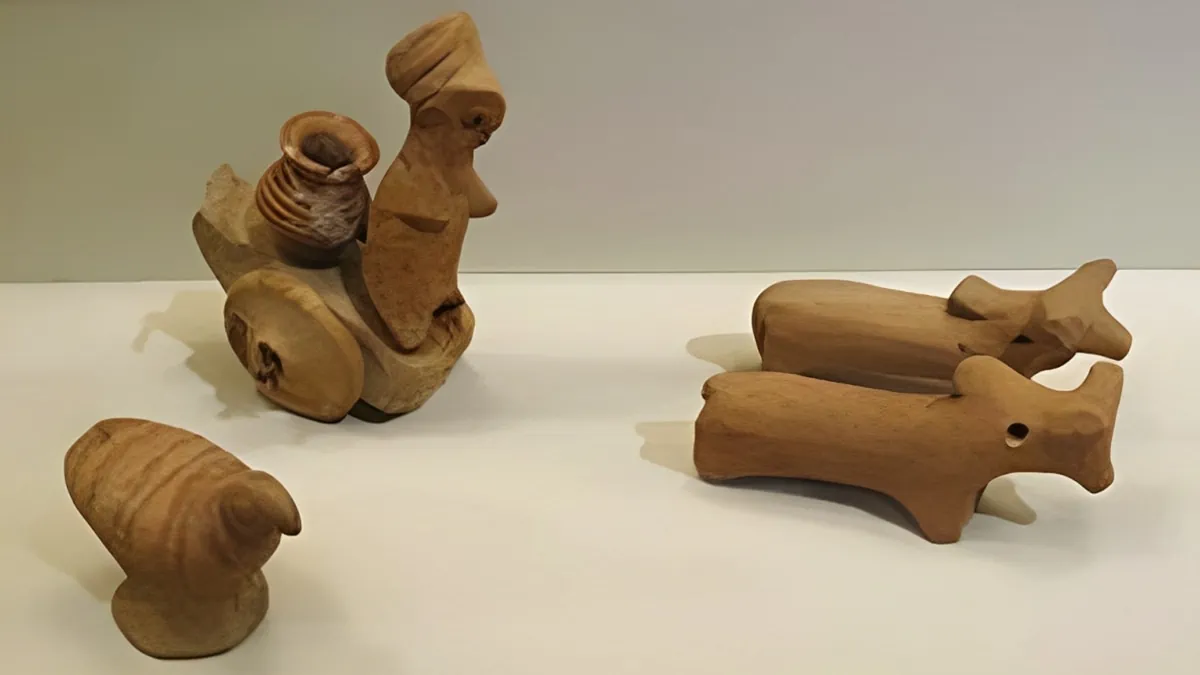
The era showed us finesse; one could learn the facts by reading or understanding art made during the period.
Here are some important forms of Indian art during the Indus Valley Civilization:
Stone Statues, Bronze Casting, and Terracotta Figures
Not in abundance, but a few yet refined figures made using stones, bronze, and terracotta were found mostly in Harappa.
The figures were as expressive as any 16th or 17th century famous self-portraits.
They’d use different wax techniques, involving heating, drying, and shaping of wax, in order to make bronze casting.
Dancing Girl, a bronze work of art from Mohenjo Daro, explains a lot of culturally rooted art.

Along with it, animal figures were used in bronze art, for example, a buffalo with its uplifted head, back, and sweeping horns.
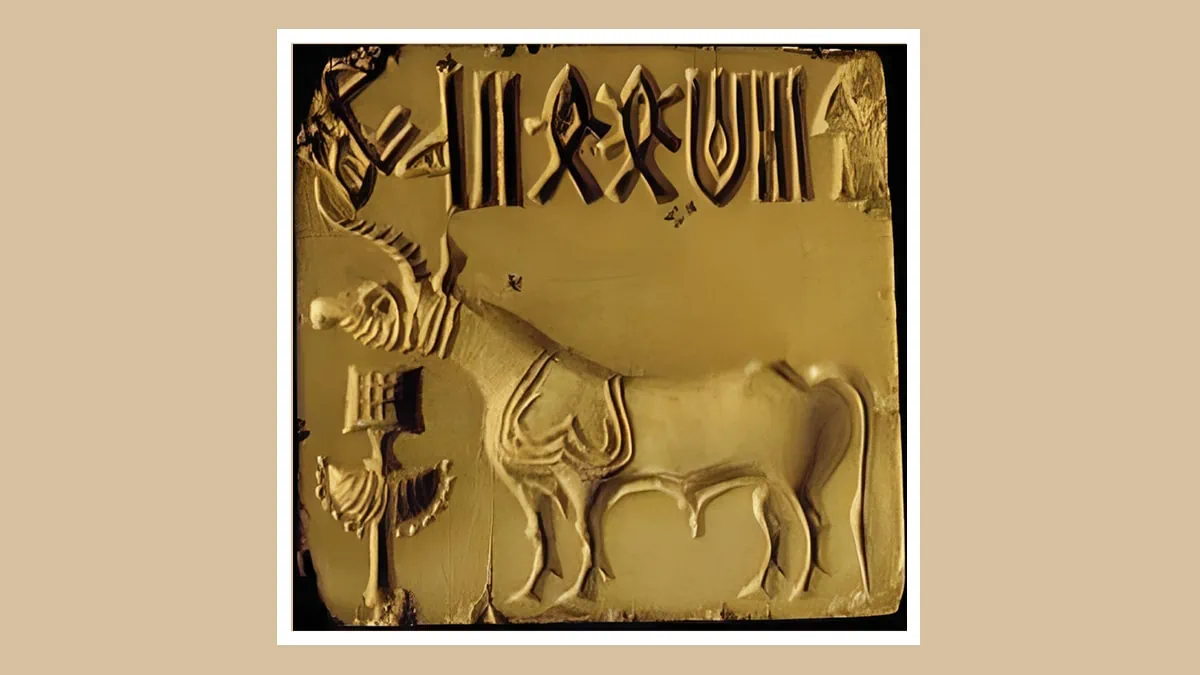
Terracotta figures focused on human figures, widely popular in the parts of the Indus Valley Civilization, which in today’s time is a part of Gujarat.
Also, terracotta art was in the form of wheels, birds, rattles, and animals, basically showing the civilization, and even human figures with beards and women draped in sarees were shown, which were seen as deities.
(Also Read: Forms in Art)
Seals
Seals were the identity cards of ancient times, with engraved designs of rhinoceros, tigers, elephants, bison, goats, and buffalo.

Harappa was a planned and organized civilization.
Seals, an Indian art, are a testament to it; they were used for commercial purposes and mostly worn by people as an amulet.
Although we never had a clarification on why it was worn, perhaps to protect from evil.
Seals date from between 2500 and 1900 BCE and were found in considerable numbers in sites such as the ancient city of Mohenjo Daro in the Indus Valley.
Pottery
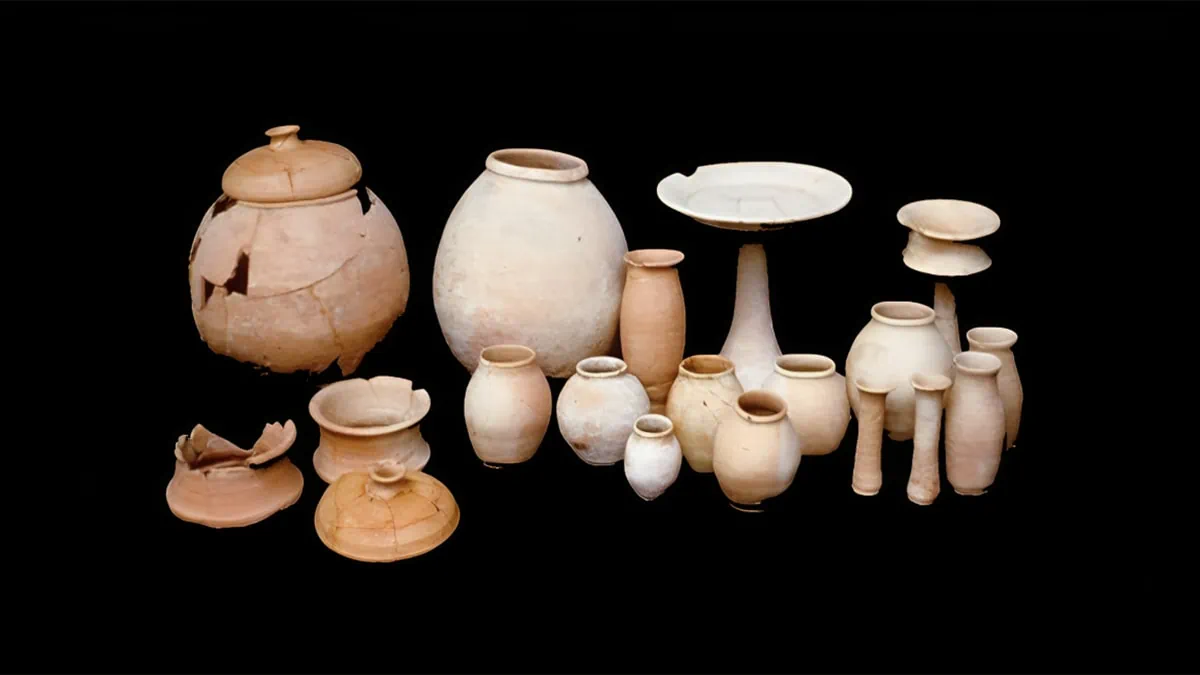
Pottery was being found in large numbers, with different shapes and sizes. It was made for household purposes—to cook, store, heat, etc.
Pottery with complex structures and designs, generally made of red clay, served decorative purposes.
Indian art, during the Indus Valley period, was ahead of its time, as ideating something with a very limited resource is a whole new challenge on its own.
Beads and Ornaments
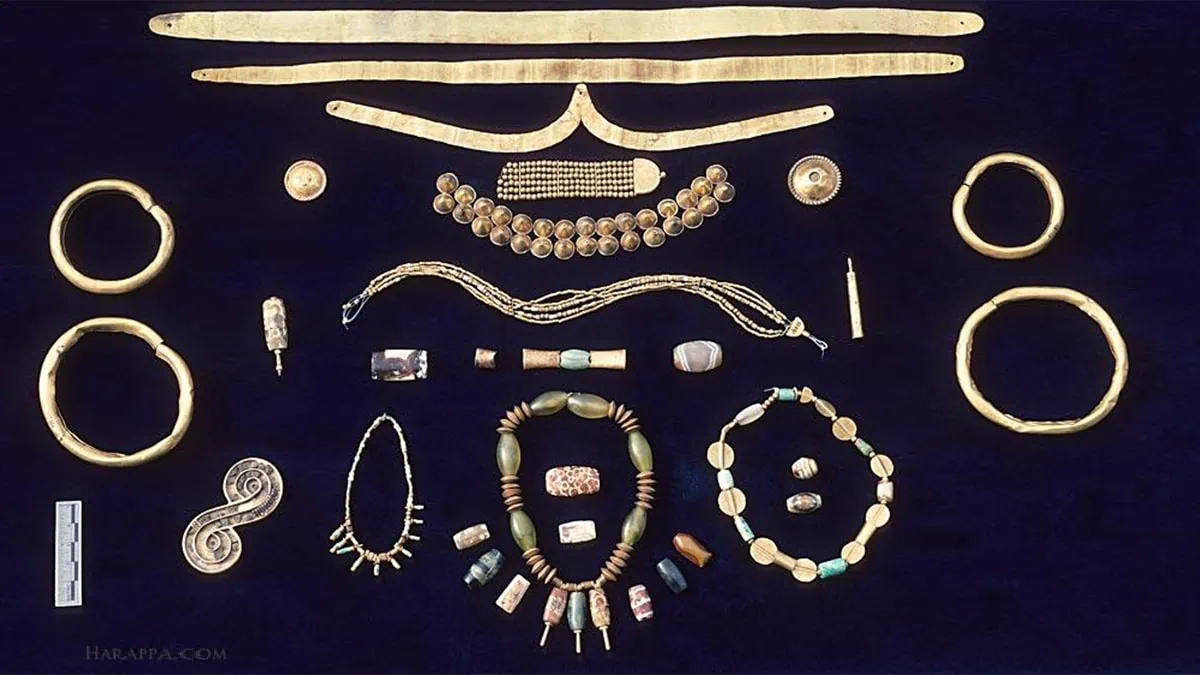
Especially in Harappan, men and women would decorate themselves with beads and ornaments made out of different materials, mainly jewels, clay, shells, and precious metals.
Indian art isn’t only about materialistic value but also about cultural and regional political value.
The way beads and ornaments were made shows how culturally inclined Harappan civilization was.
Well crafted, organic, and brilliantly designed beads in the shape of animals like monkeys and squirrels were made up of every conceivable material.
Indian art was witnessing progress in almost every aspect.
Why did India witness positive change during the Indus Valley Civilization?
It did so because it intended to retain and transfer cultural and religious sentiments to future generations and, most importantly, to make livelihoods better and more sustainable.
From pottery to sculpture to beads to terracotta figures, the ancient art of India came into being to serve one purpose: to make humans lead a planned, organized, and harmonious life.
(Also Read: A Guide to Chinese Art)
Vedic Period
Just after the fall of the Indus Valley Civilization, two groups that emerged—which in today’s times, opposed each other—were Indo-Aryan and Dravidian.
Over a millennium, Indian hadn’t witnessed any new forms of art, except for stone and bronze art, which was promoted by Indo Aryans, according to Dravidian.
They’d even question on the existence of Indo Aryans, which would often spark controversy.
According to them, Indo Aryans, were the outsiders, foreigners to this land, who settled down different parts of plains and forests.
Due to the friction between two groups, Indian art hadn’t progressed during the Vedic period.
Therefore, an environment filled with disharmony and intolerance halted the progress of Indian art until the first millennium BCE.
Quite unfair to claim who was the victim and who was the suspect.
Vedas, which held a pivotal role—after the fall of Indus Civilization—saw frictions and challenges—when Buddhism, Jainism, and local sects began flourishing across India.
(Also Read: Art in Japan)
Mauryan Art
The Mauryan empire spread swiftly all across the Indian subcontinent, except for some regions in the south.
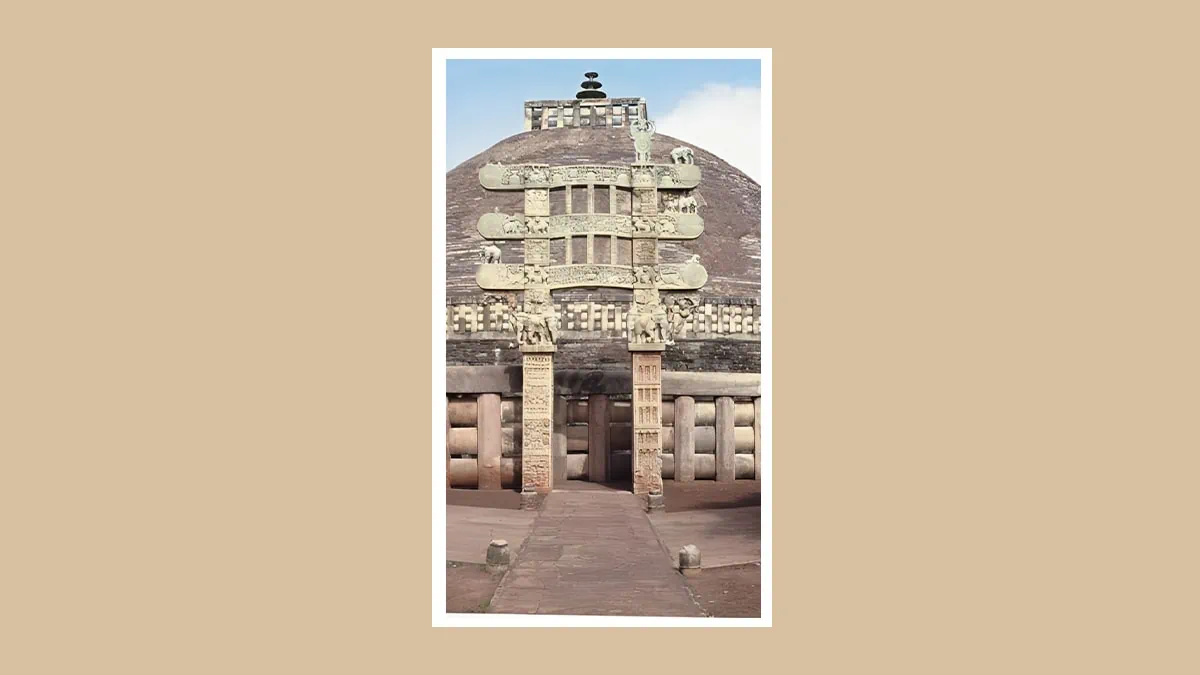
Art during this period rose to prominence, with Samrat Ashok’s architecture being the most prominent, holding great significance even in today’s time. Not because it was made with finesse, but because it was discovered by archaeologists.
However, most Indian art perished, and some remained undiscovered, including exceptional architectural and artistic works from Maurya.
Invaders from the Middle East and Western Europe left no stone unturned to destroy India’s rich culture and heritage.
Hindu deities, at that point, were significantly worshipped in almost all parts, but the birth of Jainism and Buddhism added an extra layer to India’s art styles.
Maurya Empire has existed and flourished for two good centuries; during this era, several Buddhist and Jain art came to light, influencing one’s perspective, behavior, and traditions.
Colossal Yaksha Statuary
The era, predominantly born in the 2nd century BC, gave rise to many religious shifts.
Probably, the period that influenced the creation of divine images and representation of human figures
Although ancient times paid special attention to stone art, it was in the 2nd century BC that India’s stone art gained importance.

Yaksha mainly focused on the creation of cultic images, primarily made of stones.
Humans, trees, children, and other resources used by mankind were used in stone art and considered sacred because of their involvement in shaping culture and promoting one’s faith.
(Also Read: Famous Religious Paintings)
Buddhist Art
As I’ve mentioned before, art that’s garnered love is art that’s survived in history.
Buddhist art, which is at Sanchi, Bharhut, Amravati, and elsewhere—owned by Indian museums—acted as evidence for the existence of Lord Buddha.
Also, it shows how inclined emperors were towards certain faiths.
Indian art produced between 500 BC and 150 BC emphasized the lives, struggles, and enlightenment of Buddha.

From the Ajanta caves to the Bhaja caves, which have existed for a long time, they depict iconic figures of Buddha and Bodhisattvas.
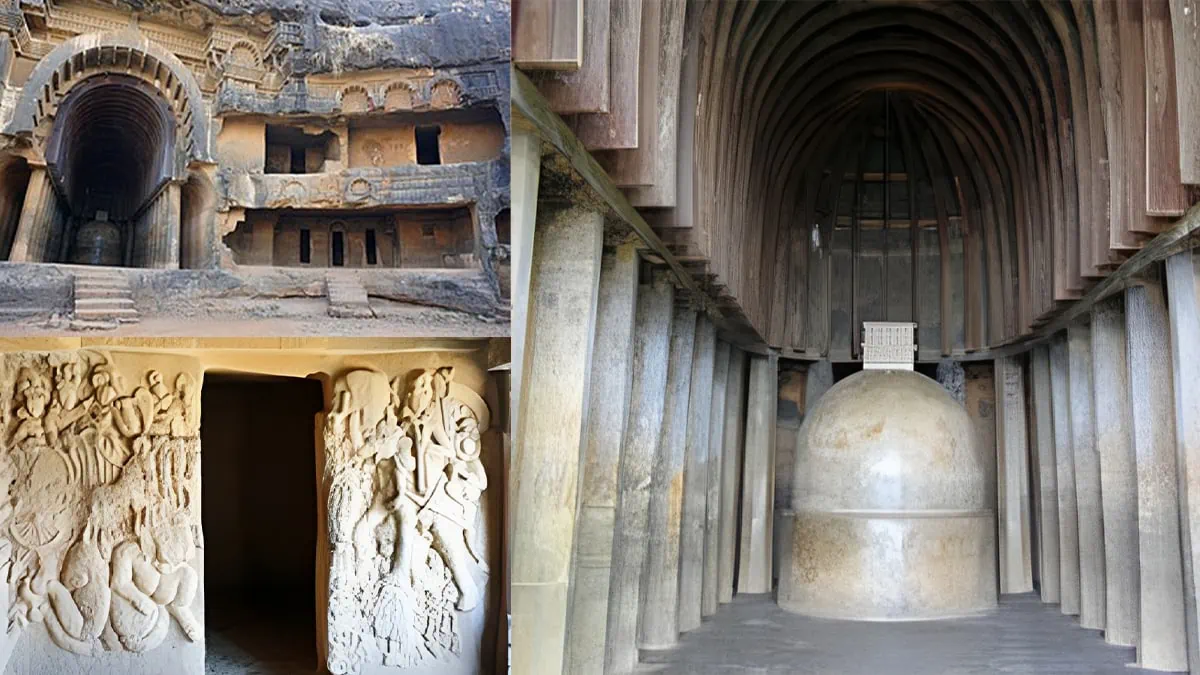
Jain Art
From Ellora caves to Jain temples at Dilwara, you’ll see Jain art being a prominent part of Indian rock cut architecture.

The followers and preachers of Jain in the old days would mostly use clay and wood to represent their deities. Due to their fragile nature, most of them perished over time.

But Jain art—the sacred one being the 23rd tirthankara, Parsva, made up of bronze—can be seen in the Prince of Wales Museum, Mumbai, and in the Patna Museum and is dated to the 2nd century BCE.
Fine, meticulously designed Jain temples has existed in most parts of India.
Its architecture is what contributes to Indian art, as it reflects Bharat’s vast and diverse ancient culture.
Image: patterns in some Jain temples

However, you may see intricate and complex patterns in some Jain temples, especially the one located in Shatrunjaya Hills near Palitana.
The reason being its renovation in the 10th century, although most parts were left untouched and away from advancement to preserve dharmic values.
If I’ve got to summarize Indian art during the peak of Jainism, I’d say it was flooded with great temples, religious buildings, and monasteries.
(Also Read: Famous Medieval Artwork)
Indian Art Under Muslim Rule
After the downfall of Maurya Empire, several rulers built their empire and shaped the art of Indian in accordance with their interests.
And for the next couples of centuries, India was under the rule of Shunga, Satavahana, and Khushan empire, until Muslims from Persia invaded India.
Muslims from Persia mass murdered Hindus and distorted India’s rich heritage and culture.
But they brought some change in every art form of India, including music, literature, paintings, and architecture.
Although Muhammad Ghor was the first Muslim emperor, it was the Mughals who significantly changed Indian art.
Mughal would introduce foreign painters to the Indian art community and ask them to produce paintings that piqued their interest.
Emperor Humayun
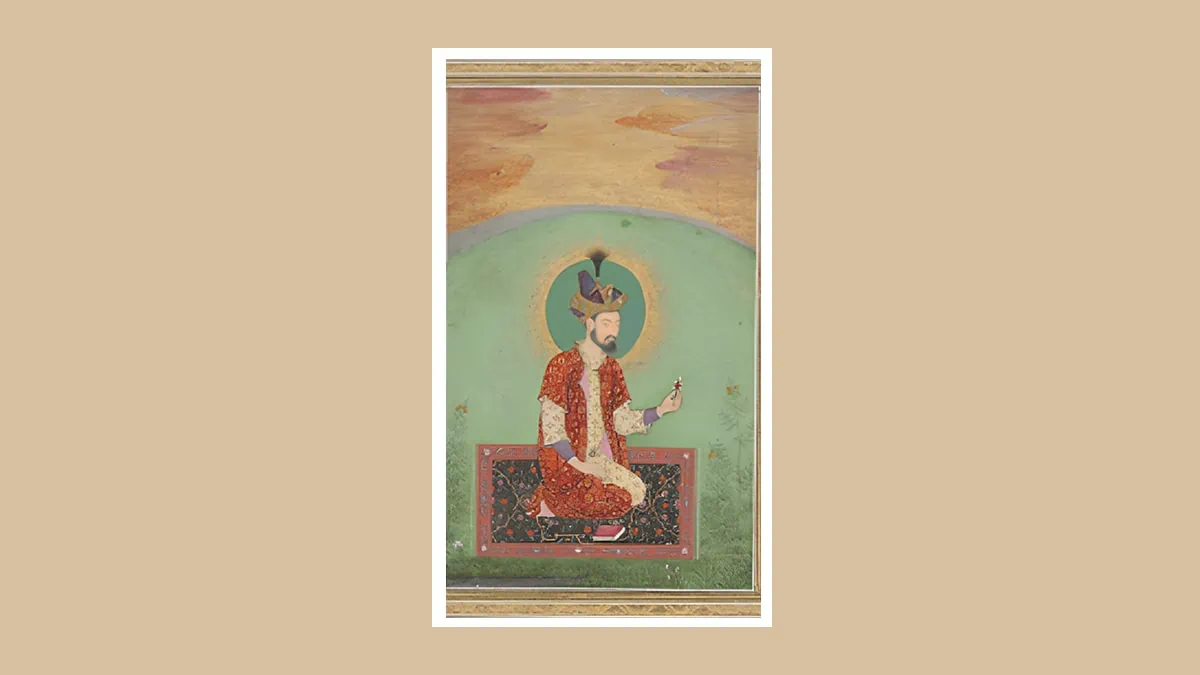
Mughal Emperor Humayun was the first to do so, and he introduced two of the finest and most skilled painters from Persian Shah Tahmasp’s time—Mir Sayyid Ali and Abd al-Samad.
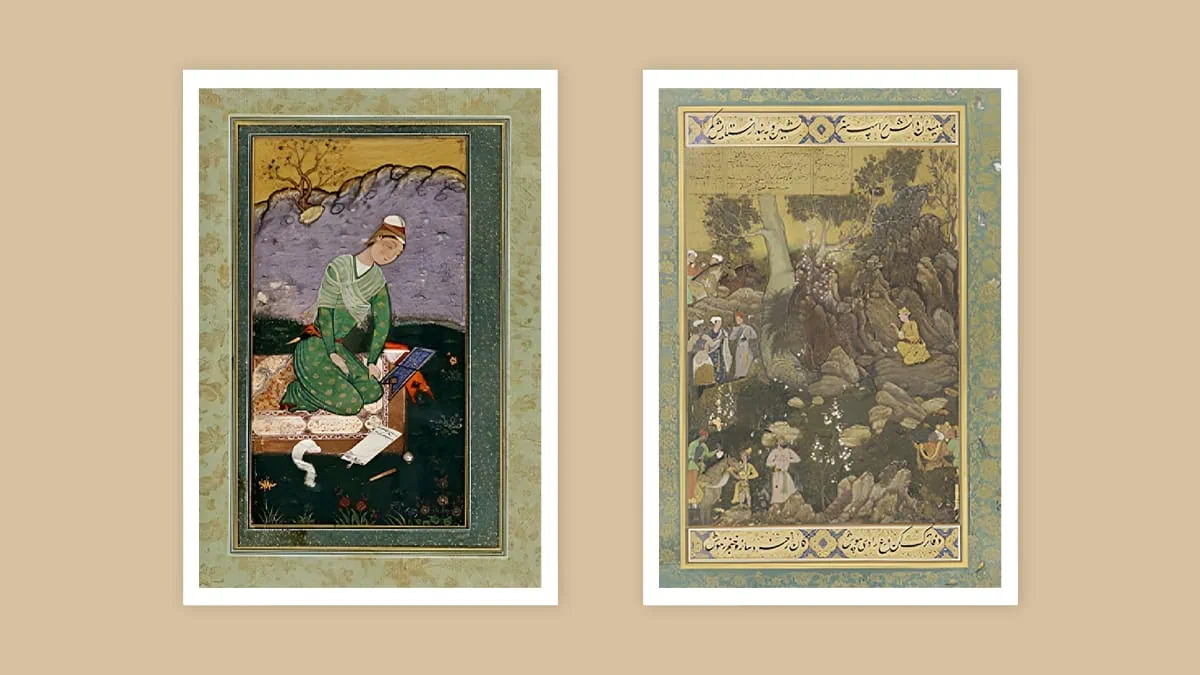
They became leading figures in developing Mughal art, which continued even under the rule of Emperor Akbar.
These two put in ample amounts of effort to make miniature paintings that flourished across India and contributed to making the Mughal style mature.
Emperor Akbar

After Humayun, Akbar took over the empire, and India’s art under the Mughals saw dramatic change as 30 new and talented painters were appointed to further the Mughal art style.
Akbar was into art and possessed great skills and knowledge of paintings; therefore, he would commission painters and reward them handsomely for the contributions they made for his court.
Daswant and Basawan were the prominent painters under Akbar’s patronage.
The Hindu artist from Akbar’s era was the producer of Ṭūṭī-nāmeh (“Parrot Book”), a remarkable painting of the time.
Whereas Basawan, Akbar’s most reliable painter and a producer of over 100 paintings, created masterpieces like A Court Scene from Sadi’s Gulistan (Rose Garden), 1596.

He was known to be the first Indian miniature painter who showed interest in Western techniques—who, being influenced by European art, intended to produce magnificent pieces of art complying with Mughal art styles.
Mughals, being obsessed with their own culture and roots, embraced ancient India’s art styles, which were missing in them.
For instance, flora and fauna were incorporated in Mughal paintings of India, adding depth, vibrancy, and a sense of inclusion.
This act influenced the production of Persian miniatures, Rajput paintings, and Pahari styles from North India.
Emperor Jahangir
The decline of the Akbar era made Jahangir foster the art style, and he demanded artists be more individualistic than collaborative.
Like the former Mughal ruler, Jahangir was also into art and could, with his artistic sense, identify the artist even if the art was unnamed.
Medieval art in India under Mughal influence or control mainly focused on paintings, which could evidently be seen in Jahangir’s era.
His time focused on several themes; Indian painters during Jahangir’s time would depict real life scenes, portraits, hunting scenes, wild life, instances of battles, etc.
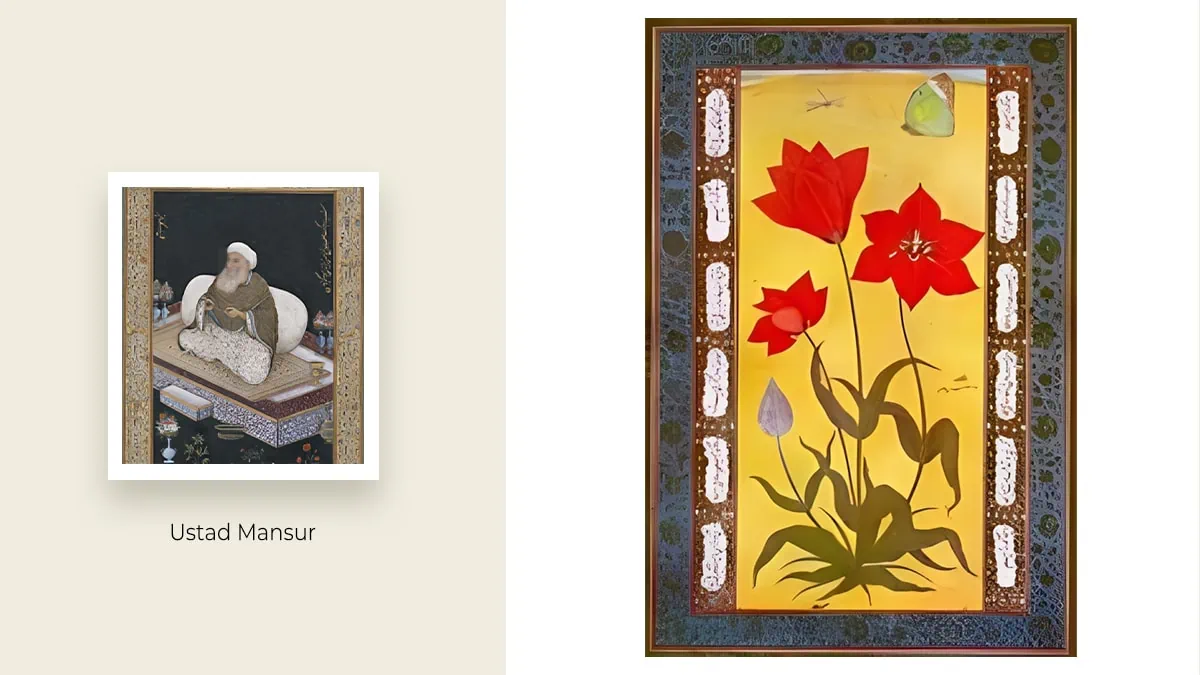
Ustad Mansur, being an important painter of his time, made impeccable paintings featuring zebra, parrot, chameleon, and Kashmiri tulips.
Emperor Shah Jahan
In 1628, Shah Jahan took over and brought amendments to the way art was perceived. The emperor commissioned thousands of painters for his own library.

The most important work that came out in Shah Jahan’s reign was “Padshahnama, a literary work explaining and emphasizing the accomplishments of highness.
Paintings, on the other hand, are made in a more formal manner, featuring court scenes.

Portrait of Emperor Shah Jahan, which represented the sovereignty, power, and authority of the dynasty, was considered the most decorative painting of Shah Jahan’s time.
However, Shah Jahan later suffered from financial crunches, but that didn’t stop him from funding painters and producing art.
The Mughal art began witnessing downfalls as the emperor pivoted his focus on other activities and failed to expand the art culture built by his father, former Emperor Jahangir.

But one of the seven wonders, Taj Mahal, was built under his rule, which was to celebrate the memories of his favorite wife, Mumtaz Mahal, who died in 1631.
Indian art, which was at its peak at Humayun’s era, was declining with each passing year in Shah Jahan, and effects continued till Aurangzeb’s era, when he himself conspired and threw Shah Jahan out of his throne.
Aurangzeb was a fanatic ruler, the cruelest of all the Mughal emperors. An oppturnistic, wicked, and mad emperor who left no stone unturned to throw artists from their patronage
Due to his radicalization, Indian art had to go through several ups and downs, with paintings being the most damaged art form during Aurangzeb’s reign.
However, Islamic calligraphy and handmade textiles continued to thrive.
The Mughal art of India plummeted with the extinction of Aurangzeb’s era, and whoever sat next on the throne remained incompetent and unable to resurrect cultural value left by the Emperor’s ancestors—whether it was paintings, architecture, sculptures, or others.
(Also Read: 13 Famous Jesus Paintings)
Indian Art Under British Rule
With the rise of the European invasion, the art and architecture of India witnessed massive shifts, with Britishers being the only ones behind it.
The British Raj had a substantial impact on Indian art, especially in the mid of 19th century.
The corrupt, ruthless, and manipulative British looted India and left patrons less wealthy and influential.
Their culture was incorporated into Indian art through the schools they established across India.
From Chennai to Bengal, colonials built several art schools and introduced the painting techniques and styles which they often practiced and believed in.
A large chunk of India’s young and fresh talents began working for Europeans, who would provide them with art supplies.
And in a short span, the company style of small painting became widely popular, whereas watercolor became the most popular medium.
There was a fusion of Indian and European art, which, to some extent, was embraced by Britishers. Raja Ravi Varma, being the popular face, produced paintings mixing two cultures.

But voices and ideas suppressed by the colonizers found their way. Through art, artists from the early 20th century began exposing the hypocrisy of colonizers.
Classics made by the Bengal School of Art began attracting attention from people across nearby areas of Bengal.
And in a short span of time, the act of expression became a revolutionary movement that gained support from all parts of the Indian subcontinent.

It was primarily associated with Indian nationalism, led by Abanindranath Tagore, which was also backed by British art administrator E. B. Havell.
Several renowned figures came forward and supported the movement by rejecting British initiated art. And it continued for many years till India got independence from British in 1974.
(Also Read: 15+ Famous French Artists)
Traditional Indian Art Styles
As mentioned earlier, Indian paintings don’t belong to any specific type, though they have existed for a long time.
From one generation to another, paintings have been looked at as a way to represent culture, tradition, and values.
During Mauryan times, paintings were created to represent holy figures and mythological scenes. Whereas the Mughals, in the medieval era, made use of paintings to emphasize Islamic practices and culture.
Distinct compositions made India’s paintings stand out from others; here are the four most popular traditional Indian paintings:
Madhubani Paintings

Although the origins of Madhubani paintings remain unknown, they were first introduced by the ruler of the Mithila Kingdom in the 8th or 7th century BCE.
It emphasizes the rich and diverse culture of India and has mostly depicted scenes from the Hindu epic Ramayana.
Religion being the main theme, Madhubani paintings are often regarded as sacred. Its vibrant, traditional nature have captured much attention
The Indian painting isn’t descriptive but symbolic and entails five distinct styles, including Bharni, Katchni, Tantrik, Godna, and Kohbar.
Patachitra Paintings

Based in Odisha, Patachitra paintings are inspired by Jagannath and the Vaishnava sect.
Hindu mythology had great significance in patachitra paintings. The word “Patachitra’ is derived from Sanskrit—patta means canvas and chitra means picture.
Patachitra doesn’t approve of the Madhubani style, which is more symbolic. However, it isn’t yet closer to the descriptive style of Indian art.
The stories of incarnation, war, and holy rituals are repeatedly featured in Patachitra paintings. Plus, Hindu gods and goddesses are featured more often than not, including Ram, Krishna, Vishnu, and others.
Warli Paintings
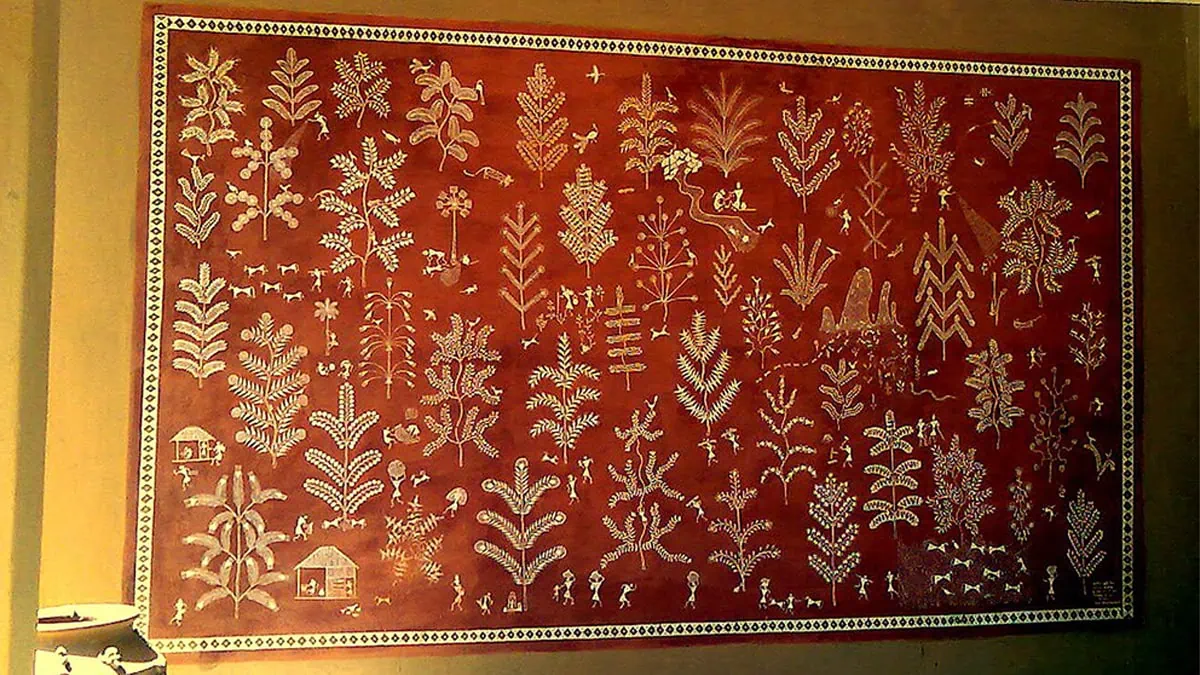
The oldest Indian paintings are Warli, which, in modern times, were mostly practiced in the Thane and Nashik regions.
Symbolic in nature, Warli paintings have depicted elements from human beings to nature’s origins.
Folk style paintings, called Warli, mainly belonged to tribal communities across Maharashtra.
Based on the concept of Mother India, Warli paintings were made to pay tribute to nature, well-being, and ancient Indian civilization.
Two main types of Warli paintings are ritualistic and non-ritualistic.
Ritualistic intent to connect ourselves with the past, present, and future involves holding sacred values, whereas non ritualistic intent to decorate a house involves glamourizing activities like hunting.
(Suggested: 10 Controversial Artworks)
Miniature Paintings

Delicate brushstrokes, graceful forms, and soothing colors are what miniature paintings contain.
Introduced by the Mughals in the 16th century, miniature paintings demonstrate various scenes from Emperor’s lives—courts, warfare plans, coronations, and whatnot!
Artists would use different surfaces to showcase the lives of their emperors; a range of surfaces include palm leaves, paper, wood, marble, ivory panels, and cloth.
Although it gained importance in Akbar’s era, its origins date back to the 7th century AD, when Muslims flourished for the first time under the patronage of the Palas of Bengal.
The miniature art style, which is a blend of Persian, Islamic, and Indian elements, has developed its own identity across several parts of India.
Frequently Asked Questions
The Mauryan Empire, between 322 and 185 BCE, contributed tremendously to the development and progress of Indian art.
Bhimbetka Rock is the oldest rock art in India. It was first discovered by an Indian archaeologist, Vishnu Shridha Wakankar.
The Ashoka Pillar was the most famous Indian work of art during the Mauryan Empire.
Stone statues, bronze casting, terracotta figures, and seals were the most famous Indian art forms during the Indus Valley Civilization.
Taj Mahal, made under the leadership of Shah Jahan, has been the most famous creation of the Mughal Empire.
Hinduism, Buddhism, and Jainism were the main religions in ancient Indian art.
Padshahnama, a literary work explaining and emphasizing the accomplishments of highness, was the most famous work of art during Shah Jahan’s reign.



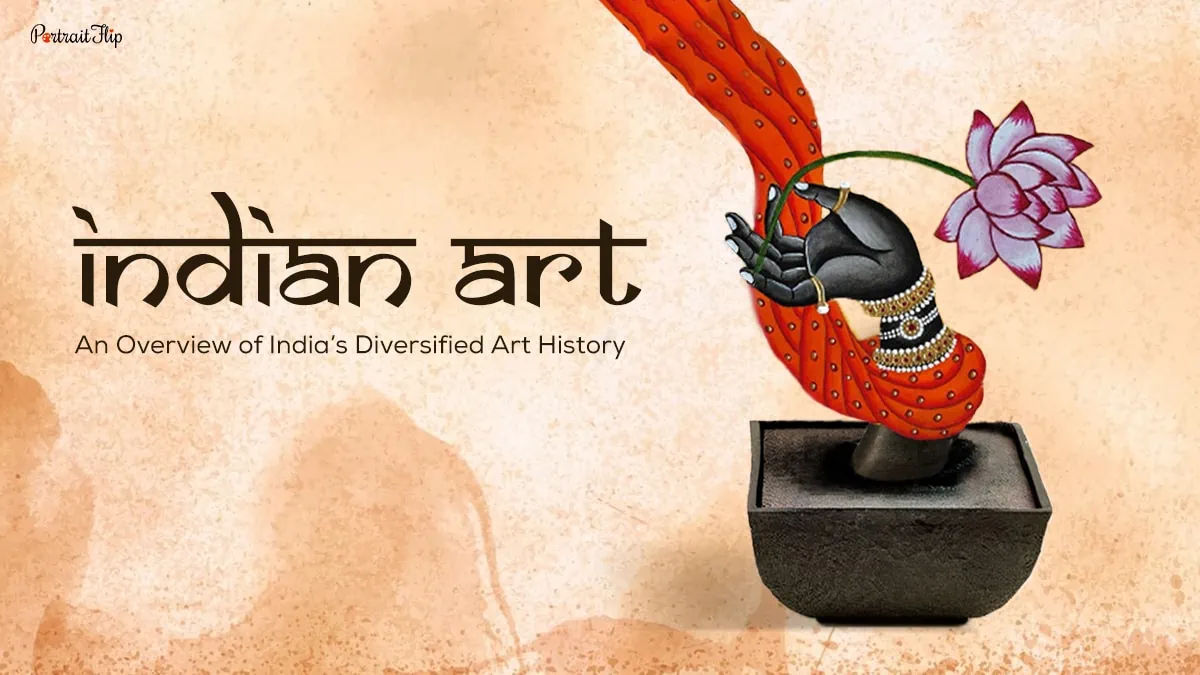
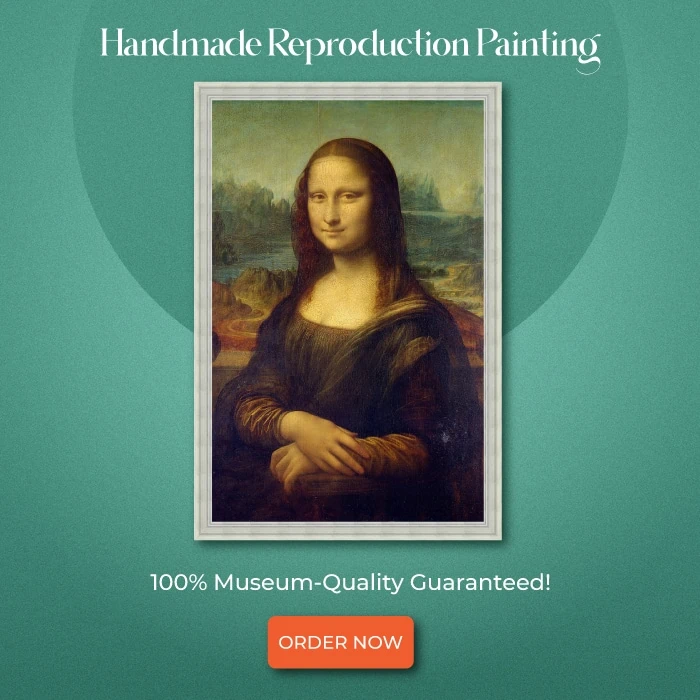

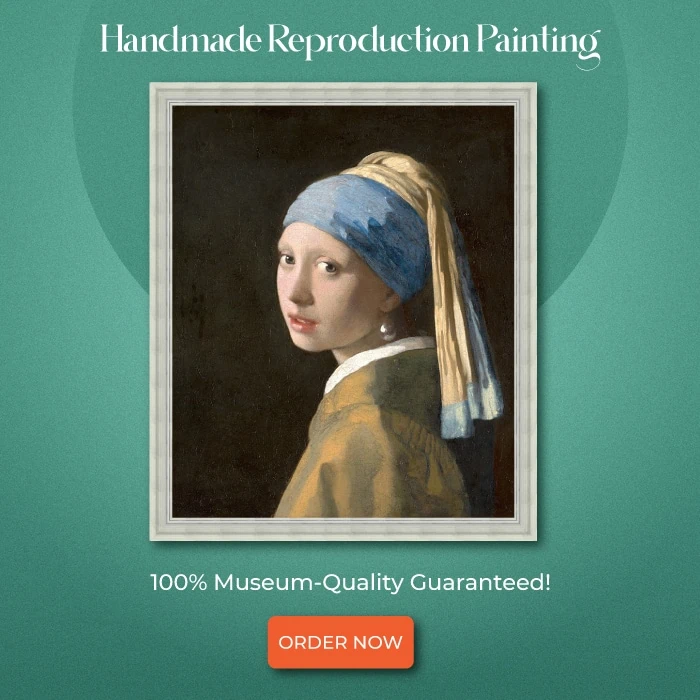
Nice information
Very nice
Informative